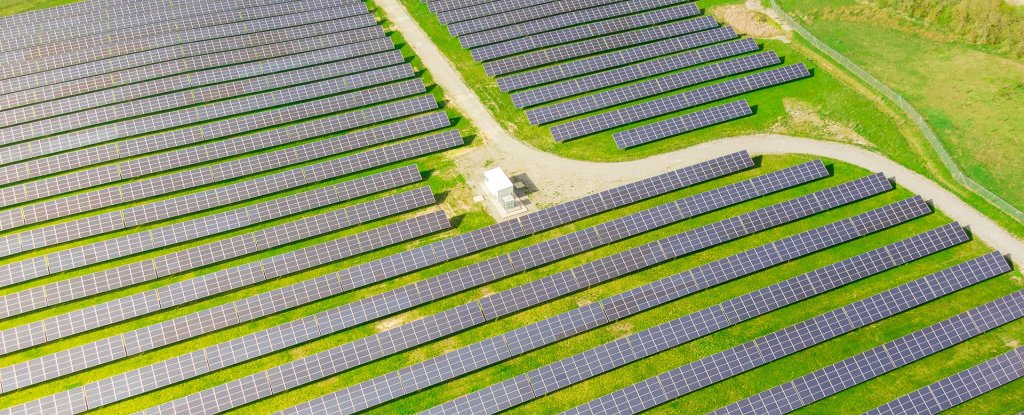Products You May Like
There’s a major catch to the world’s need for solar panels, a new analysis suggests. The booming solar panel market – which is critical for a clean energy future – could demand close to half the world’s aluminum by 2050. Thankfully, there are ways we can mitigate this.
Unlike more precious metals, such as the lithium and cobalt used in rechargeable batteries, the scarcity of aluminum is not the issue; in fact, it is the most abundant metal on Earth. But the production of pure aluminum which is used in solar panel frames comes with a huge energy cost that could translate to bulk emissions.
According to the International Energy Agency, solar panels are predicted to provide roughly a third of the world’s total electricity demand by 2050. In 2019, just over 2 percent of global electricity came from solar – but solar is producing the cheapest electricity in history and renewable energy is being installed at a record rate.
“This represents an enormous manufacturing task that will create a demand for a variety of minerals,” a team of photovoltaics researchers, led by Alison Lennon from the University of New South Wales (UNSW) in Australia, explains in their paper.
As the researchers outline, some solar roadmaps predict the world will need 85 times more solar energy than we currently produce to limit global warming to safe levels, although predictions vary and some projections might underestimate how much solar – and aluminum – we actually need.
This surging demand for solar could mean that by 2050, more than 40 percent of the world’s current aluminum production will be required to mount and install solar panel arrays, the researchers found. That’s over three-quarters of all the aluminum China produced in 2020.
“This escalation in demand does not include the use of aluminum in other clean energy technologies,” such as wind turbines and electric vehicles, “which is also expected to increase, or its continued use for transportation and building infrastructure,” Lennon and colleagues note.
What matters is how the aluminum is made. Making aluminum is an extractive and energy-intensive process, with most of the emissions coming from the electricity used to power its production.
Fortunately, aluminum is one of the most recycled and most recyclable materials around. In fact, nearly 75 percent of all the aluminum produced is still in use today. That’s great news, because recycling aluminum uses a fraction of the energy required to make it anew, and just a smidgeon of the emissions.
“Owing to its ‘infinite’ recyclability, aluminum can play a critical role in the rapid growth of [solar cells] to terawatt levels by 2050 – growth that will be required to reduce emissions to net zero,” Lennon and team write.
Their analysis modeled various scenarios and pathways to 2050, the worst case being ‘business as usual’ where the emissions intensity of aluminum production remains unchanged and its demand adds close to 4,000 megatonnes of CO2 to the atmosphere.
Factored in were estimates of how much recycled aluminum will be available to use in China, where most solar panels are made, the lifetime of solar panel parts, and expected improvements in aluminum production techniques.
“We’re not going to get rid of these emissions unless something is done about the process,” engineer Guðrún Sævarsdóttir of the University of Reykjavik told Ian Morse at PV Magazine in 2020.
In the best-case scenario, emissions from aluminum production would rapidly decrease to 2030 then stay below the “ambitious target” of 1,500 megatonnes of CO2 by mid-century – which is the International Aluminium Institute’s upper limit for keeping global heating below 2 degrees.
To get there, the researchers say it will be critical to take full advantage of recycled aluminum and to source it from local producers in the countries where solar panels are installed rather than importing parts.
Efficiency gains in solar yields and panel configurations could help reduce aluminum demand, but the sheer number of solar panels needed – and the urgency of the climate crisis – means we need to pull out all the stops.
The decarbonization of electricity grids that power aluminum smelters must happen in the next decade to keep emissions below 1,000 megatonnes of CO2 by 2050, a task made easier with policies to incentivize low-carbon production and if new facilities are built in renewable energy zones, the researchers conclude.
The study was published in Nature Sustainability.
